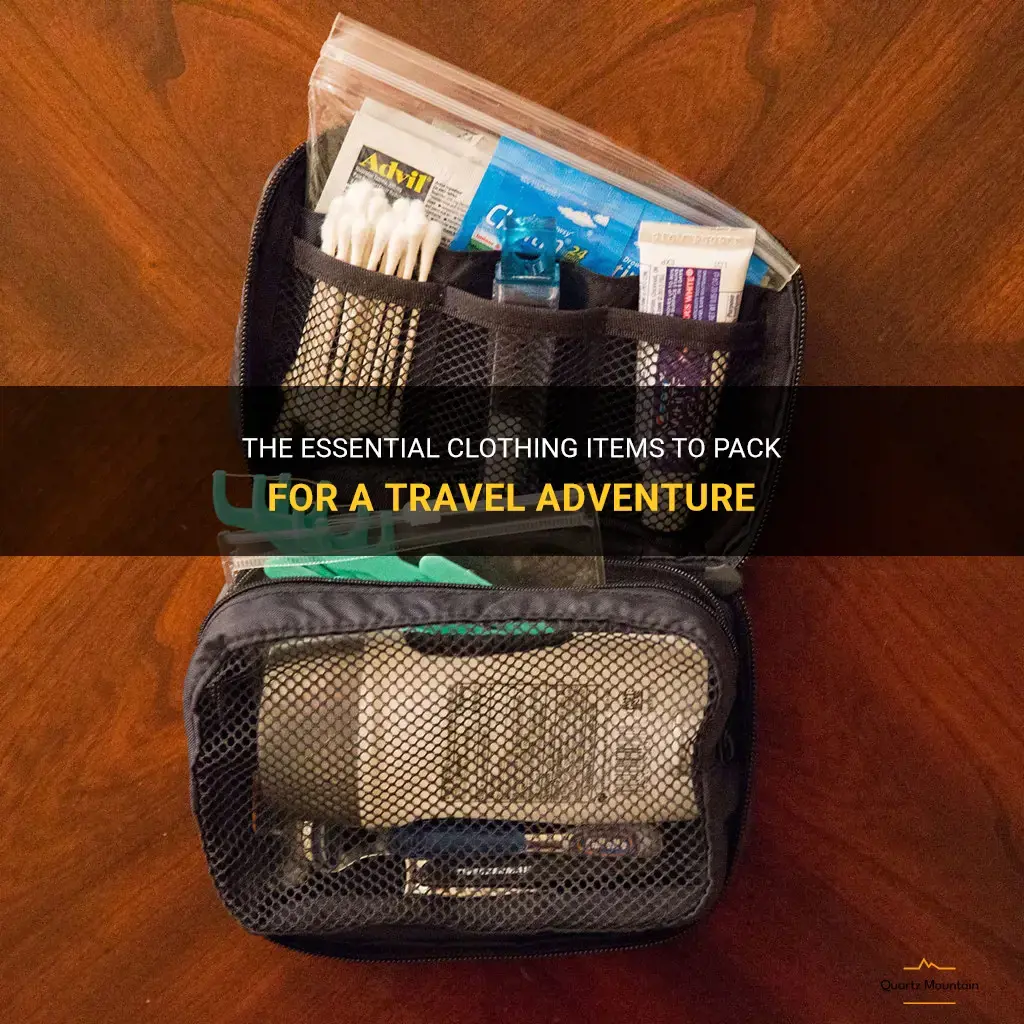
Are you planning your next travel adventure? One of the most important aspects of preparing for your trip is packing the right clothing items. Whether you're going on a hiking expedition or exploring a bustling city, having the essential clothing items is crucial for a comfortable and successful trip. From versatile bottoms to weather-appropriate layers, we've got you covered with a guide to the essential clothing items you need to pack for your travel adventure. So, grab your suitcase and get ready to pack like a pro!
What You'll Learn
- How do I determine what clothes to pack for a specific travel destination and climate?
- Are there any general guidelines for packing clothes that can be versatile for different activities and temperatures?
- What are some essential clothing items that should be included in every travel wardrobe?
- How can I pack efficiently to maximize the space in my luggage?
- Are there any specific clothing items or fabrics that are recommended for travel due to their durability or ease of cleaning?

How do I determine what clothes to pack for a specific travel destination and climate?
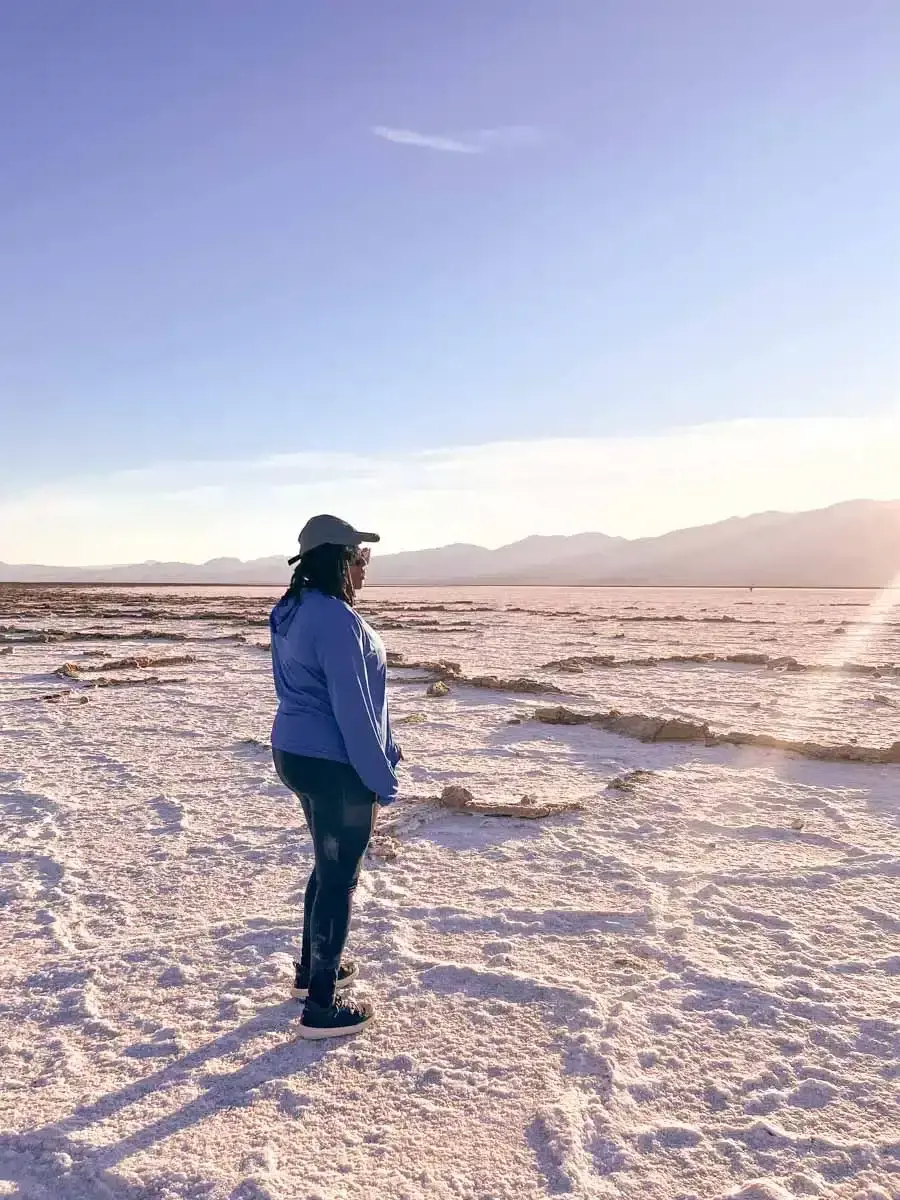
When planning a trip to a specific destination, it is important to consider the climate and weather conditions in order to determine what clothes to pack. By packing appropriately for the climate, travelers can ensure that they are comfortable and prepared for any weather they may encounter during their trip. Here are some steps to help you determine what clothes to pack for a specific travel destination and climate.
- Research the Destination's Climate: Start by researching the climate of your destination during the time of your visit. Look for average temperatures, precipitation levels, and any seasonal weather patterns. This will give you a general idea of what to expect and helps in choosing the right clothing.
- Consider the Season: Consider whether you are traveling during the summer, winter, fall, or spring seasons. Each season has its own unique climate, and this will impact the types of clothes you need to pack. For example, summer destinations may require lighter and breathable fabrics, while winter destinations will require warm clothing and accessories.
- Pack Layers: Packing layers is essential when traveling to a destination with variable weather conditions. Layers allow you to add or remove clothing depending on the temperature and weather. Start with a base layer, such as a comfortable and moisture-wicking shirt, and then add a mid-layer, such as a sweater or lightweight jacket. Finally, pack an outer layer such as a waterproof jacket or coat to protect against rain or wind.
- Consider the Activities: Think about the activities you plan to do during your trip. Are you going hiking, sightseeing, or attending formal events? Different activities may require specific types of clothing. For example, if you plan on hiking, pack comfortable and breathable clothing with good walking shoes. If you plan on attending formal events, pack appropriate clothing such as dressy outfits or suits.
- Check the Local Dress Code: Depending on your destination, there may be a specific dress code to consider. Some countries or religious sites may require conservative clothing, so be sure to research and respect the local dress code. Pack appropriate clothing that adheres to the cultural norms and customs of the destination.
- Don't Forget Accessories: Accessories can make a big difference in keeping you comfortable and prepared for various weather conditions. Don't forget to pack items such as hats, sunglasses, scarves, gloves, and socks. These accessories can help protect you from the sun, keep you warm in colder temperatures, or add a touch of style to your outfits.
- Pack Versatile and Mix-and-Match Clothing: To minimize the number of items you need to pack, try to choose versatile clothing that can be mixed and matched. This will help you create different outfits without carrying excess clothing. Opt for clothing in neutral colors that can easily be paired together.
Example: If you plan to travel to Paris in the spring, research the average temperatures during that time of year. You may find that temperatures range from 10 to 20 degrees Celsius (50 to 68 degrees Fahrenheit). Based on this information, you can pack a mix of lightweight sweaters, long-sleeved shirts, and pants. You may also want to include a light jacket for cooler evenings or windy days. As spring in Paris can be unpredictable, be sure to pack an umbrella or raincoat to stay dry in case of rain showers.
In conclusion, determining what clothes to pack for a specific travel destination and climate requires some research and planning. Consider the destination's climate, the season, the activities you plan to do, and any local dress codes. Pack layers, versatile clothing, and don't forget accessories to ensure you are comfortable and prepared for any weather conditions you may encounter during your trip.
Essential Items to Pack for the Camino de Santiago
You may want to see also

Are there any general guidelines for packing clothes that can be versatile for different activities and temperatures?
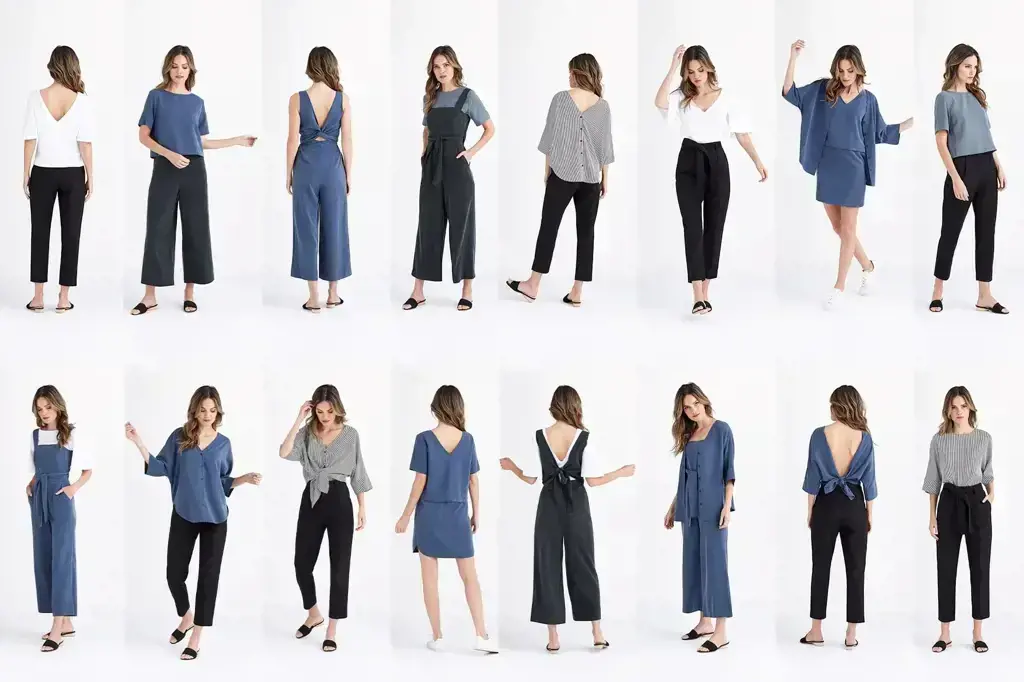
When traveling, it can be a challenge to pack clothing that is versatile enough to accommodate different activities and temperatures. However, with some careful planning and consideration, it is possible to pack a wardrobe that can be worn in various situations. Here are some general guidelines to help you pack clothes that are versatile for different activities and temperatures.
- Consider the climate: Before packing, research the weather conditions of your destination. Will it be hot and humid, or chilly and windy? Understanding the climate will help you choose the right types of clothing to pack.
- Choose neutral colors: Opt for clothing items in neutral colors such as black, white, gray, or tan. Neutral colors are timeless, versatile, and can be easily mixed and matched with other items in your wardrobe.
- Pack lightweight and breathable fabrics: Lightweight and breathable fabrics such as linen, cotton, or bamboo are great options for versatile clothing. These fabrics are comfortable to wear in warm weather and can be layered for cooler temperatures.
- Bring layers: Layering is key when it comes to versatile packing. Pack a mix of tank tops, t-shirts, long-sleeve shirts, and a lightweight sweater or cardigan. Layering allows you to adjust your outfit based on the temperature.
- Choose convertible clothing: Look for clothing items that can serve multiple purposes. For example, a dress that can be worn both casually and dressed up for a formal occasion. Convertible pants that can be unzipped to become shorts are also a great option.
- Don't forget about accessories: Accessories can make a big difference in transforming an outfit. Pack a few statement necklaces, scarves, and belts to add variety to your wardrobe. These accessories can change the look of an outfit with minimal effort.
- Research the activities you'll be doing: Consider the activities you have planned for your trip and pack accordingly. If you'll be hiking, bring a pair of comfortable and durable shoes. If you'll be attending a formal event, include a dressier outfit option. Tailoring your packing list to your planned activities will ensure you have the right clothing for each situation.
Here's an example of how these guidelines can be applied:
Let's say you're traveling to a tropical destination with a mix of beach activities and exploring cultural landmarks. Researching the climate, you find that it will be hot and humid. You decide to pack a mix of lightweight and breathable clothing items.
For bottoms, you pack a pair of convertible pants that can be zipped off into shorts for days spent on the beach, as well as a lightweight skirt that can be dressed up for visits to cultural sites. You also include a pair of leggings for cooler evenings.
At the top, you pack tank tops, t-shirts, and a long-sleeve shirt that can be layered. Additionally, you pack a lightweight sweater or cardigan for cooler nights. These tops can be mixed and matched with your bottom options.
You also pack a versatile dress that can be worn casually during the day or dressed up for a night out. To add variety to your outfits, you bring a few statement necklaces, scarves, and belts.
Finally, you include a pair of comfortable walking shoes for exploring, as well as flip-flops for days at the beach.
By following these guidelines and tailoring your packing list to your specific destination and activities, you can pack a versatile wardrobe that will keep you prepared for different activities and temperatures. Remember to pack items that can be easily mixed and matched, and don't forget about the power of accessories to transform an outfit. Happy travels!
The Essential Packing Guide for an EBC Trek: What You Need to Bring
You may want to see also

What are some essential clothing items that should be included in every travel wardrobe?
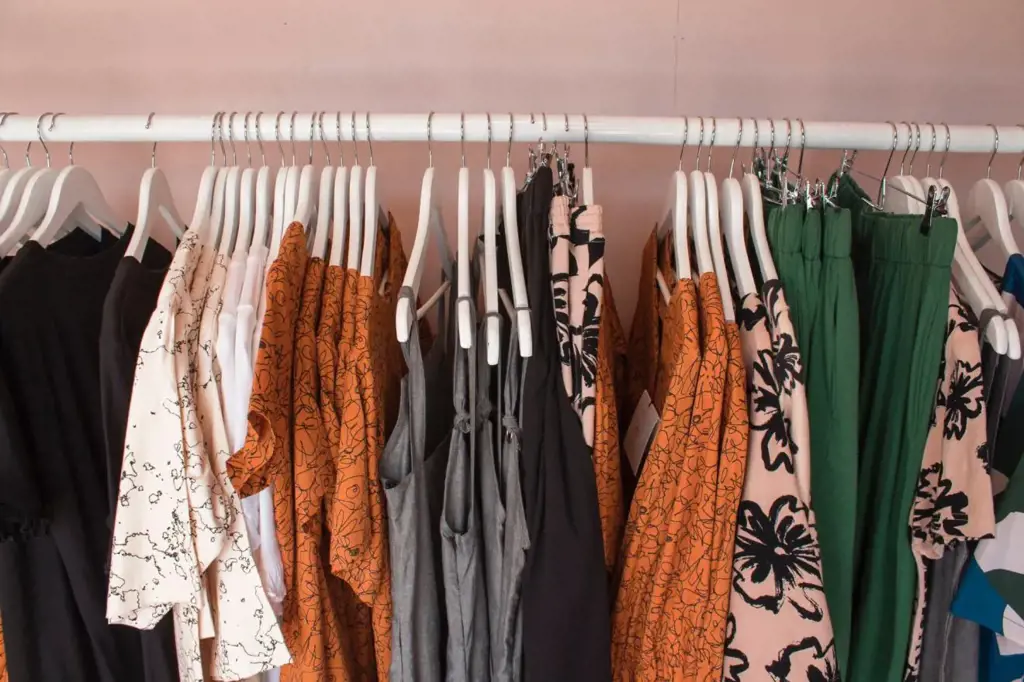
When planning a trip, one of the most important things to consider is what clothing items to pack. Having the right wardrobe can make all the difference in terms of comfort, style, and functionality while traveling. Here are some essential clothing items that should be included in every travel wardrobe.
- Versatile Bottoms: A pair of versatile bottoms like jeans or leggings are a must-have for any travel wardrobe. They can be dressed up or down and can be worn with a variety of tops and shoes. Look for bottoms that are made of comfortable, breathable materials that can withstand long hours of wearing.
- Comfortable Tops: Pack a few comfortable tops that are suitable for different occasions. Opt for lightweight, wrinkle-resistant fabrics that are easy to pack and won't take up much space in your luggage. T-shirts, tank tops, and blouses in neutral colors are great options as they can be mixed and matched with other clothing items.
- Layering Pieces: Depending on your destination, weather conditions can vary throughout the day. It's important to pack layering pieces such as cardigans or light jackets that can be easily added or removed to adapt to temperature changes. This way, you can stay comfortable whether it's hot or cold.
- Functional Footwear: Choose footwear that is comfortable, versatile, and suitable for the activities you'll be doing during your trip. A pair of sneakers or walking shoes is a must for long days of sightseeing or exploring. If you're heading to the beach or pool, don't forget to pack a pair of sandals or flip-flops.
- Swimwear: If you're traveling to a destination with a beach or pool, packing swimwear is essential. Make sure to choose swimwear that fits well and makes you feel comfortable. Consider packing a cover-up as well, which can double as a dress or a top when you're not at the water.
- Accessories: Don't forget to bring accessories that can enhance your outfits and add a touch of style. Items like scarves, hats, and sunglasses not only provide protection from the sun but can also elevate your look. Additionally, accessories like a lightweight travel purse or a travel belt can provide convenience and security while on the go.
- Undergarments and Socks: Pack enough undergarments and socks to last your entire trip. Comfortable and breathable underwear and socks are essential for staying fresh and comfortable throughout the day. Consider packing a mix of styles depending on your activities and the climate of your destination.
- Versatile Outerwear: Depending on your destination, you may need to pack outerwear such as a rain jacket or a lightweight coat. Having a versatile outer layer can protect you from unexpected weather conditions while still keeping your outfits stylish and functional.
Remember to also consider the climate and cultural dress codes of your destination when selecting clothing items for your travel wardrobe. By packing these essential items, you can ensure that you'll be prepared for any situation while staying comfortable and stylish on your trip.
Essential Items to Pack for a Memorable European Trip in October
You may want to see also

How can I pack efficiently to maximize the space in my luggage?
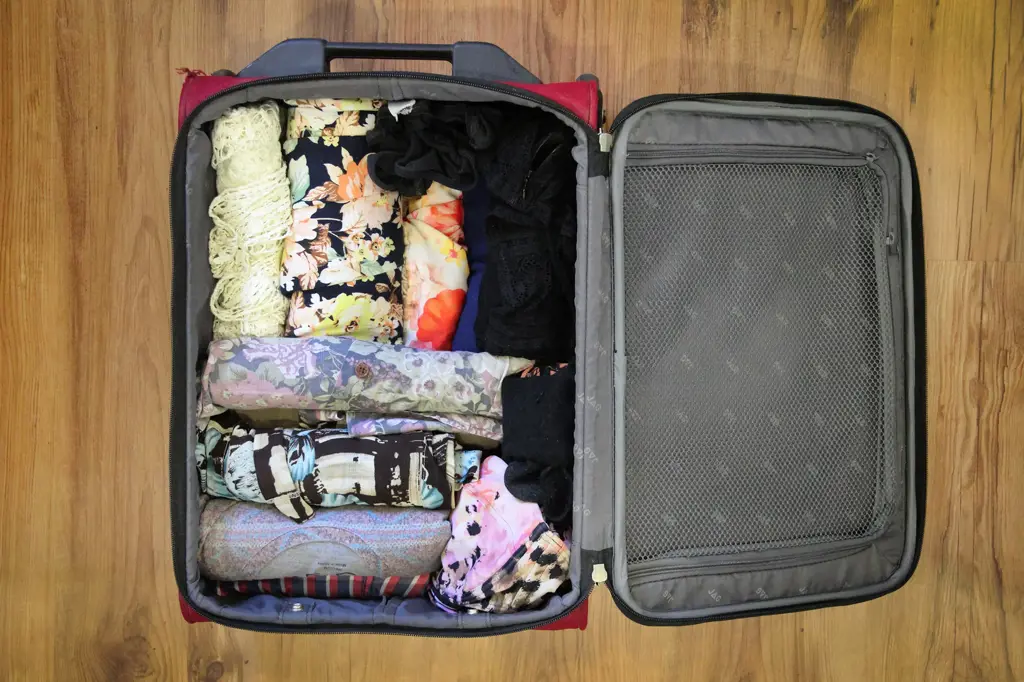
Efficiently packing your luggage to maximize space is a skill that can save you from unnecessary stress and extra baggage fees. By following a few simple steps and utilizing some smart techniques, you can make the most out of the limited space in your suitcase. Here are some tips on how to pack efficiently and maximize space in your luggage.
- Make a packing list: Before you start packing, make a list of everything you need to bring. This will help you stay organized and avoid overpacking. Be sure to include essentials such as clothing, toiletries, and any specific items you may need for your trip.
- Choose the right suitcase: Invest in a lightweight yet sturdy suitcase with compartments and pockets to help you stay organized. Consider the size of your suitcase and ensure it meets your needs without being too bulky or exceeding airline weight restrictions.
- Roll your clothes: Rolling your clothes instead of folding them is a great space-saving technique. Not only does it reduce the amount of space they take up, but it also helps prevent wrinkles. Start by folding your clothes in half lengthwise, then roll them tightly from the bottom up. This technique allows you to fit more clothes in your suitcase while also creating a more compact arrangement.
- Utilize packing cubes or compression bags: Packing cubes or compression bags are handy tools for maximizing space in your luggage. These bags are designed to compress your clothes, allowing you to fit more in less space. Simply place your rolled clothes inside the bag and use the built-in compression mechanism to remove excess air.
- Use the layering technique: Layering your clothes in your suitcase can help you make the most of the available space. Start by placing heavier and larger items like shoes at the bottom. Then, layer your rolled clothes on top, making sure to distribute the weight evenly. Finish by placing smaller items or accessories on the top layer.
- Pack dual-purpose items: To further maximize space, pack items that serve multiple purposes. For example, a sarong can be used as a beach cover-up, towel, or even a scarf. Choose versatile clothing items that can be mixed and matched to create multiple outfits, reducing the need for extra clothes.
- Use every nook and cranny: Don't forget to utilize every inch of your suitcase, including the corners and small pockets. Roll up socks and stuff them inside your shoes. Place small items like chargers or toiletries in the side pockets of your suitcase. Fill empty spaces with underwear or tightly rolled t-shirts to avoid wasted space.
- Wear bulky items during travel: If you have bulky or heavier items such as jackets or boots, wear them instead of packing them. This not only saves space in your luggage but also keeps you warm during the journey.
By following these steps and utilizing smart packing techniques, you can efficiently pack your luggage and maximize the available space. Not only will you save on baggage fees, but you will also have everything you need for your trip neatly organized in your suitcase. Happy packing!
Essential Items to Pack for Dad's Hospital Bag: A Comprehensive Guide
You may want to see also

Are there any specific clothing items or fabrics that are recommended for travel due to their durability or ease of cleaning?
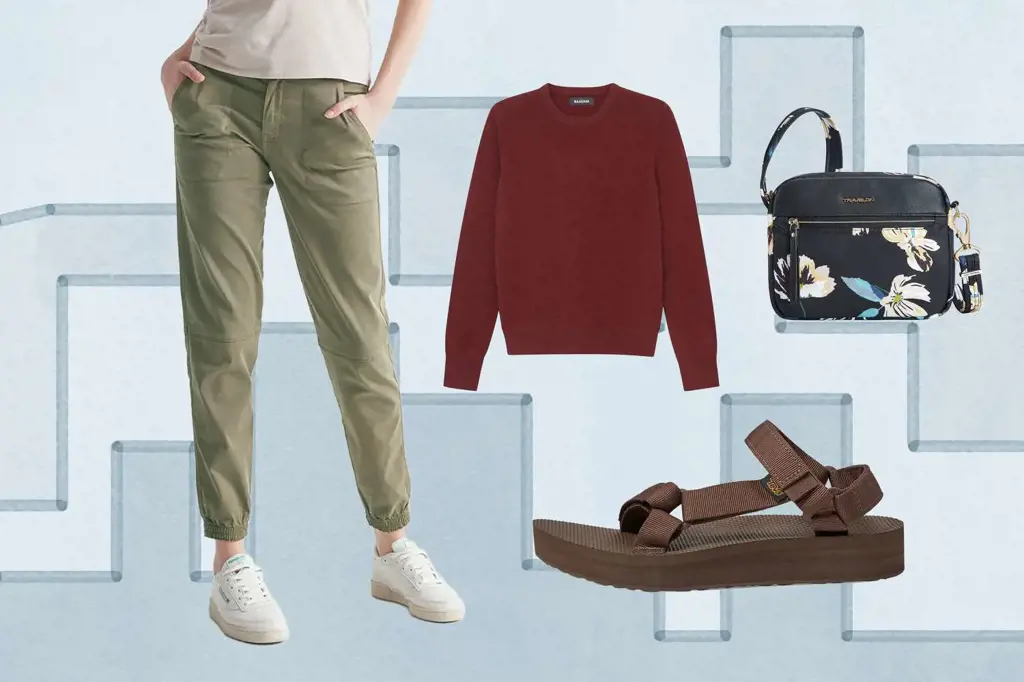
When it comes to travel, choosing the right clothing can make a big difference in terms of comfort, durability, and ease of cleaning. It's important to select clothing items and fabrics that are suitable for the specific destination and activities planned during the trip. Here are some recommendations for durable and easy-to-clean clothing options for travel:
- Synthetic Fabrics: Synthetic fabrics such as nylon, polyester, and spandex are popular choices for travel clothing due to their durability and low maintenance. These fabrics are known for their quick-drying properties, which is especially useful when washing clothes on the go. Synthetic fabrics are also resistant to wrinkles, making them perfect for long flights or packing in a suitcase.
- Merino Wool: Merino wool is a natural fabric that is renowned for its moisture-wicking and odor-resistant properties. Despite being wool, it is very comfortable to wear in warm weather as well as in cold climates. Merino wool is also highly durable and can be machine-washed without losing its shape or softness. It is a great option for travelers who want to pack light and avoid frequent laundering.
- Ripstop Nylon: Ripstop nylon is a specially reinforced fabric that is resistant to tearing and ripping. It is commonly used in outdoor gear such as hiking pants, jackets, and backpacks. When it comes to travel, clothing made from ripstop nylon is a smart choice as it can withstand rough handling, abrasion, and harsh weather conditions. This fabric is easy to clean and maintains its integrity even after repeated washings.
- Cotton Blends: While pure cotton tends to wrinkle easily and takes a long time to dry, cotton blends offer a more practical option for travel clothing. Fabrics that incorporate cotton with synthetic fibers such as polyester or elastane offer the best of both worlds. They provide the natural comfort of cotton while also enhancing durability, quick-drying, and wrinkle resistance.
- Quick-Drying Undergarments: It's worth investing in quick-drying undergarments for travel, especially if you'll be engaging in activities that may make you sweat or get wet. Look for underwear and bras made from moisture-wicking materials such as nylon or polyester. These fabrics will help keep you dry and comfortable, and they can be easily washed and dried overnight.
In addition to selecting the right fabrics, it's important to consider the design and features of the clothing items. Look for clothing with functional details such as hidden pockets, adjustable straps, and convertible options. These features can make your travel experience more convenient and efficient.
When it comes to cleaning travel clothing, hand washing is often the most convenient option. However, if machine washing is necessary, make sure to follow the manufacturer's instructions for temperature, cycle, and detergent. To save on luggage space, consider packing a travel-size detergent or using multipurpose soap that can be used for both personal hygiene and laundry.
In conclusion, choosing durable and easy-to-clean clothing for travel is essential for a comfortable and hassle-free trip. Synthetic fabrics, merino wool, ripstop nylon, cotton blends, and quick-drying undergarments are all excellent options to consider. By selecting the right fabrics and paying attention to cleaning instructions, you can ensure that your travel wardrobe will withstand the rigors of your journey and still look great, even after multiple washings.
Essential Items to Include in Your Texas Packing List
You may want to see also
Frequently asked questions
For a beach vacation, it's essential to pack lightweight and breathable clothing. Opt for loose-fitting garments like sundresses, shorts, and tank tops made from materials such as cotton or linen. Don't forget to pack a swimsuit, flip-flops, a wide-brimmed hat, and sunglasses to protect yourself from the sun. Additionally, include a lightweight cover-up or sarong for when you want to go for a stroll or grab lunch.
When packing for a hiking trip, prioritize comfort and functionality. Opt for moisture-wicking and quick-drying materials like nylon or polyester for your clothing choices. Pack lightweight and breathable shirts, shorts or pants, depending on the weather and terrain. Layering is key, so bring along a lightweight jacket or fleece for cooler temperatures. Don't forget to pack hiking socks, sturdy and comfortable hiking shoes, a hat, and sunglasses to protect yourself from the elements.
For a city sightseeing trip, it's important to strike a balance between comfort and style. Pack versatile clothing items that can be mixed and matched to create different outfits. A pair of comfortable walking shoes is essential. Choose lightweight and breathable materials for tops and bottoms, such as cotton or blends. Don't forget to pack a light jacket or cardigan for cooler evenings, as well as accessories like a hat and sunglasses. It's also a good idea to carry a small backpack or crossbody bag for carrying essentials and staying hands-free.
When packing for a winter getaway, it's all about layering and insulation. Invest in a warm, waterproof and breathable winter coat to protect yourself from the cold. Pack thick, insulating sweaters or thermal tops to layer underneath. Don't forget to bring a few pairs of thermal socks, gloves, a beanie, and a scarf to keep your extremities warm. Opt for jeans or pants made from thicker materials to keep your legs protected. And don't forget to pack warm and comfortable boots to traverse snowy or icy terrain.







